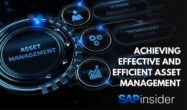SAP Asset Tracking
Filter By
Browse By
- SAP Analytics and AI
- SAP Application Development and Integration
- All SAP Application Development and Integration
- SAP ABAP
- SAP ABAP Development Tools
- SAP ABAP Test Cockpit
- SAP API Management
- SAP BAPI
- SAP Basis
- SAP BRF
- SAP Business Application Studio
- SAP CMS
- SAP Design Studio
- SAP Development Tools
- SAP DevOps
- SAP EAI
- SAP EDI
- SAP Extension Suite
- SAP Fiori
- SAP Fiori Elements
- SAP Integration Suite
- SAP Low Code Application Development
- SAP Low Code Automation
- SAP Netweaver
- SAP Release Management
- SAP UI5
- SAP Web Application Server
- SAP Web IDE
- SAP Business Process Management
- SAP Center of Excellence
- SAP CIO
- SAP Customer Experience
- SAP Data and Data Management
- All SAP Data and Data Management
- SAP BW
- SAP BW/4HANA
- SAP Crystal Reports
- SAP Data Archiving
- SAP Data Center
- SAP Data Governance
- SAP Data Integration
- SAP Data Migration
- SAP Data Quality
- SAP Data Services
- SAP Data Strategy
- SAP Data Visualization
- SAP Data Warehouse Cloud
- SAP DMS
- SAP Document Control
- SAP EIM
- SAP ETL
- SAP ETL Tools
- SAP HANA
- SAP HANA Administration
- SAP HANA Deployment Infrastructure
- SAP HANA Studio
- SAP Master Data
- SAP Master Data Governance
- SAP MDM
- SAP Enterprise Architect
- SAP Enterprise Asset Management
- SAP ERP
- SAP Finance
- All SAP Finance
- SAP Accounting
- SAP AR AP
- SAP Asset Accounting
- SAP Billing Systems
- SAP BPC
- SAP BRIM
- SAP Cash Management
- SAP Central Finance
- SAP Controlling
- SAP COPA
- SAP Cost Center Accounting
- SAP Currency Risk
- SAP e-invoicing
- SAP FICO
- SAP Finance Automation
- SAP Advanced Financial Closing
- SAP Financial Consolidation
- SAP Financial Planning
- SAP FX Risk
- SAP General Ledger
- SAP Global Tax Management
- SAP Hyperion
- SAP Order to Cash
- SAP Payment Processing
- SAP Profitability Analysis
- SAP Rebate Management
- SAP S/4HANA Finance
- SAP SWIFT Compliance
- SAP Treasury Management
- SAP Universal Journal
- SAP Governance Risk and Compliance
- SAP Human Capital Management
- SAP Intelligent Technologies
- SAP Platform and Technology
- All SAP Platform and Technology
- SAP Business Technology Platform
- SAP Cloud
- SAP Cloud Connector
- SAP Cloud Integration Platform
- SAP Cloud Migration
- SAP Cloud Platform
- SAP Cloud Providers
- SAP Cloud Strategy
- SAP Digital Signature
- SAP Container Platform
- SAP HANA Enterprise Cloud
- SAP Digital Asset Management
- SAP Smart Forms
- SAP HEC
- SAP Digital Integration Hub
- SAP Hyperscalers
- SAP Infrastructure
- SAP Messaging
- SAP Quality and Testing
- SAP Security
- SAP Spend Management
- SAP Supply Chain Management
- All SAP Supply Chain Management
- SAP APO
- SAP Asset Management
- SAP Business Network
- SAP Digital Manufacturing Cloud
- SAP Digital Twin
- SAP EWM
- SAP IBP
- SAP Inventory Management
- SAP Label Printing
- SAP Logistics
- SAP Manufacturing
- SAP Manufacturing Automation
- SAP MES
- SAP MII
- SAP MM
- SAP MRO
- SAP MRP
- SAP Order Management
- SAP Plant Maintenance
- SAP PLM
- SAP Production Planning
- SAP S&OP
- SAP SD
- SAP SPM
- SAP Supply Chain Planning
- SAP Track and Trace
- SAP Transportation Management
- SAP System Administration
Asset Tracking is the practice of understanding all the physical assets that a company has and tracking them. Examples of physical assets are generators, vehicles, computers, or other equipment. Most often this is done by a GPS tracking system, a bar code scanner or a RFID (radio-frequency identification device). Asset tracking is a good practice for all businesses, but it is becoming a necessity in some industries.
SAP asset tracking is part of Enterprise Asset Management with SAP Business Network for Asset Tracking. It is a centralized cloud-based hub using the Internet of Things (IoT) for an automated tracking solution. Asset performance is optimized by collecting, sharing, and tracking equipment usage information across a network, for collective asset management among business partners.
Key Capabilities of SAP Business Network for Asset Tracking include:
- Cloud based deployment: The cloud has minimal IT costs, low maintenance, and security management.
- Integration with SAP solutions: Ability to connect with other SAP solutions like SAP S/4HANA.
- Intuitive user experience. Simplifies the user experience by the SAP Fiori user experience.
- Collaborative partner relationships. Business partners have free basic membership to collaborate.
- Digital vehicle hub. Across the automotive and mobility value chain, you can enable new monetization streams.
Asset Tracking is the practice of understanding all the physical assets that a company has and tracking them. Examples of physical assets are generators, vehicles, computers, or other equipment. Most often this is done by a GPS tracking system, a bar code scanner or a RFID (radio-frequency identification device). Asset tracking is a good practice for all businesses, but it is becoming a necessity in some industries.
SAP asset tracking is part of Enterprise Asset Management with SAP Business Network for Asset Tracking. It is a centralized cloud-based hub using the Internet of Things (IoT) for an automated tracking solution. Asset performance is optimized by collecting, sharing, and tracking equipment usage information across a network, for collective asset management among business partners.
Key Capabilities of SAP Business Network for Asset Tracking include:
- Cloud based deployment: The cloud has minimal IT costs, low maintenance, and security management.
- Integration with SAP solutions: Ability to connect with other SAP solutions like SAP S/4HANA.
- Intuitive user experience. Simplifies the user experience by the SAP Fiori user experience.
- Collaborative partner relationships. Business partners have free basic membership to collaborate.
- Digital vehicle hub. Across the automotive and mobility value chain, you can enable new monetization streams.
By monitoring the condition of their assets, companies learn when an upgrade or replacement is needed to maintain productivity and have a competitive advantage. Asset tracking helps companies find better, more efficient ways of doing things. It integrates all the tracking into one interface, eliminating manual paperwork or spreadsheets.
Benefits of SAP Business Network for Asset Tracking are:
- Collaborative asset management. Enables the ability to share best practices of optimal management.
- Asset Management all in one place. A single repository for equipment information to enable effective management and customer service.
- Exchange asset performance feedback. Ability to connect with manufacturers, operators, or service providers to share performance analytics.
Vendors partners for asset management are: Movilitas, SAP, Precisely, Prospecta Software
Key Considerations for SAPinsiders:
- Capital Expenditure Management with SAP Fiori. Read the case study on how an integrated suite of SAP Fiori Apps can manage your capital expenditure from an annual budget through expenditure requests, projects, and asset capital management. The eBook shows common CAPEX challenges from companies and how SAP Fiori is a great platform for digitalization.
- Take Asset Management Planning to the Next Level. Read the article about how companies are realizing that asset management is not just about keeping up with assets. It is about balancing cost, risk, and performance to meet the company’s overall objectives. Discover how to bring advanced and strategic views of asset management to your organization.
- Connecting Manufacturing Products and Assets. This exclusive Q & A on loT disruption of the supply chain with SAP’s Thomas Ohnemus and Richard Howells, explains how loT can help businesses drive value from connected products, assets, and manufacturing. Discover key insights on how loT is transforming the world and how organizations should take part in this transformation.
844 results
-

- SAP ECC 6.0
 Premium
Premium
How to Comply with the Provisions of IFRS while Recording Capital Asset Transactions in SAP ECC 6.0
Reading time: 25 mins
Learn key adjustments that are required to make capital asset management compliant with International Financial Reporting Standards (IFRS). See the changes you need to make in SAP ERP Central Component (SAP ECC) 6.0 while transitioning from US Generally Accepted Accounting Principles (GAAP). Key Concept An organization needs to make adjustments in accounting for financial transactions...…
-

 Premium
Premium
Inflation-Based Revaluation of Fixed Assets
Reading time: 23 mins
Learn the configuration done for monthly inflation-based revaluation. This configuration needs slight changes based on the frequency and inflation calculation methodology required for a specific implementation. Key Concept Inflation-based revaluation is a statutory requirement for several high-inflation countries. These countries publish an inflation index for revaluation of the fixed asset base of the company. In...…
-

 Premium
Premium
AUC with Investment Measure Using Work Breakdown Structure
Reading time: 20 mins
FinancialsLearn how to implement assets under construction (AUC) with the Investment Management module using work breakdown structure (WBS). Follow a detailed discussion of the settlement process. Key Concept A work breakdown structure (WBS) element with its assets under construction (AUCs) can be termed as an investment measure. In simple terms, an AUC is created to...…
-
-

- SAP Enterprise Asset Management
 Premium
Premium
Achieving Effective and Efficient Asset Management
Reading time: 11 mins
In heavy asset intensive industries from manufacturing and processing facilities through to Rail, Aerospace, Utilities, Oil & Gas and Mining operations, the largest operational expense beyond the CAPEX of building the plant resides in maintaining the equipment required to do the job. Membership Required You must be a member to access this content.View Membership LevelsAlready…
-

 Premium
Premium
Allow Your Customers to Track Deliveries Online with SAP E-Commerce for mySAP ERP
Reading time: 17 mins
You can use two different methods to allow customers to track orders via the Web. The simplest method involves tracking orders with the Bill of Lading field and works best when all items for one line item in an order ship together in the same package. A more complex method involves the Express Delivery Company...…
-

 Premium
Premium
How to Set Up and Process Leased Assets
Reading time: 11 mins
Learn how to configure leased assets to make sure that not only depreciation is posted but also the interest and the periodic payments. Key Concept In SAP Asset Accounting (FI–AA) you can maintain several kinds of assets. One particular kind is the leased asset. Besides the standard fixed-asset functionality for this kind of asset, the...…
-

- SAP ERP
 Premium
Premium
Create Multiple Assets with Individual Characteristics in One Step
Reading time: 7 mins
Learn how to customize the functionality required to simultaneously create multiple assets and still be able to maintain specific data for each individual asset. Key Concept Within Asset Accounting (FI-AA), you can create one asset at a time or multiple assets simultaneously. Since the release of R/3 4.0A, SAP supports simultaneous creation of multiple assets....…
-
-

 Premium
Premium
3 Ways to Ensure Accurate Depreciation Values in ECC
Reading time: 12 mins
The primary focus of the Asset Accounting (FI-AA) sub-ledger is to accurately calculate and track values for fixed asset records. Often it is possible that planned values stored in FI-AA do not reflect the existing system configuration and therefore are incorrect. You can use program RAAFAR00 (recalculate values) to ensure that calculated amounts are correct....…
-

- SAP Accounting
 Premium
Premium
SAP S/4HANA Finance: Understand the Different Options and Nuances of Enabling Parallel Accounting in New Asset Accounting
Reading time: 24 mins
Learn about the configuration options available in SAP S/4HANA Finance to set up parallel accounting aligned to different accounting principles, especially when you are migrating from classic Asset Accounting (FI-AA), a parallel accounts approach, to the new FI-AA module. Key Concept The SAP S/4HANA Finance system provides a transparent, real-time, optimized IT solution for implementation...…
-

Asset Accounting for Today’s Economy
Reading time: 4 mins
Asset accounting is the process of tracking and recording all company assets. By tracking and recording all company assets, businesses can more easily identify the most critical investments and make better strategic decisions about where to allocate resources. This information can help finance and accounting teams make better strategic decisions about allocating resources to improve...…
Become a Member
Unlimited access to thousands of resources for SAP-specific expertise that can only be found here.
Become a Partner
Access exclusive SAP insights, expert marketing strategies, and high-value services including research reports, webinars, and buyers' guides, all designed to boost your campaign ROI by up to 50% within the SAP ecosystem.
Upcoming Events
Related Vendors
Your request has been successfully sent


